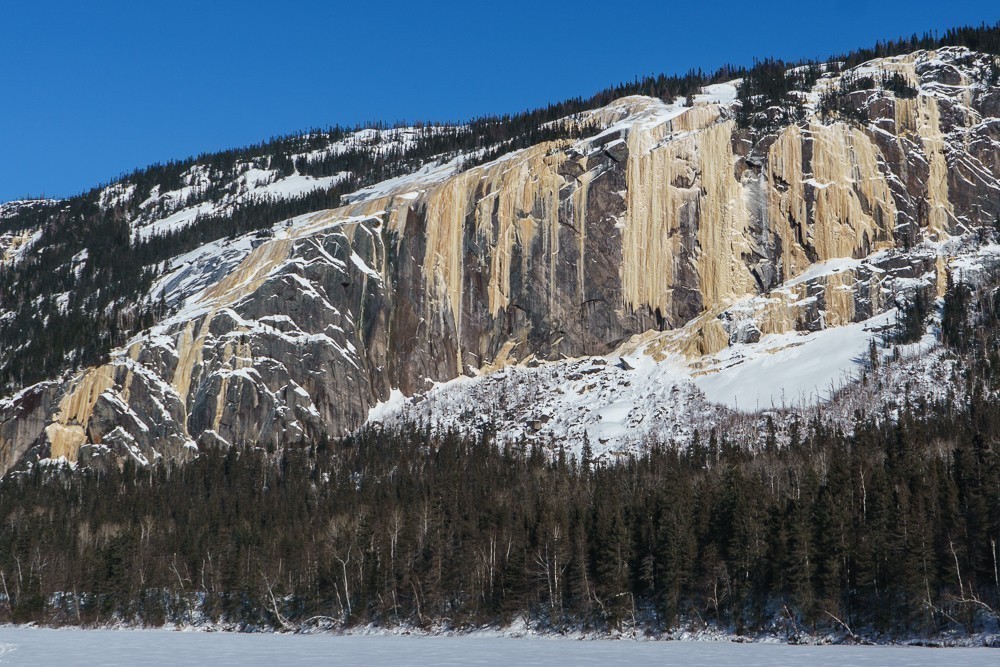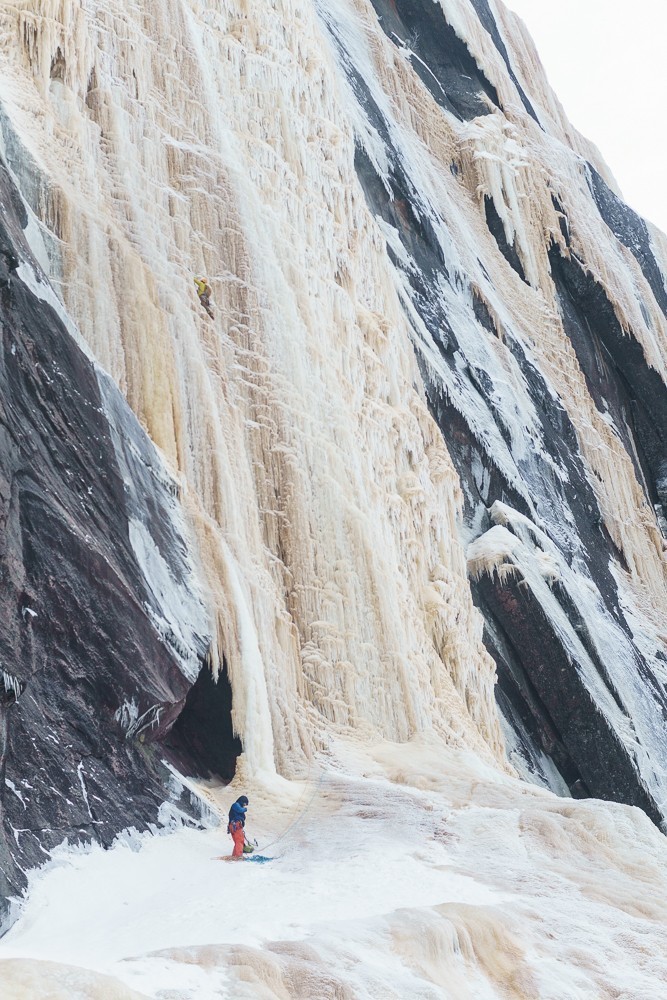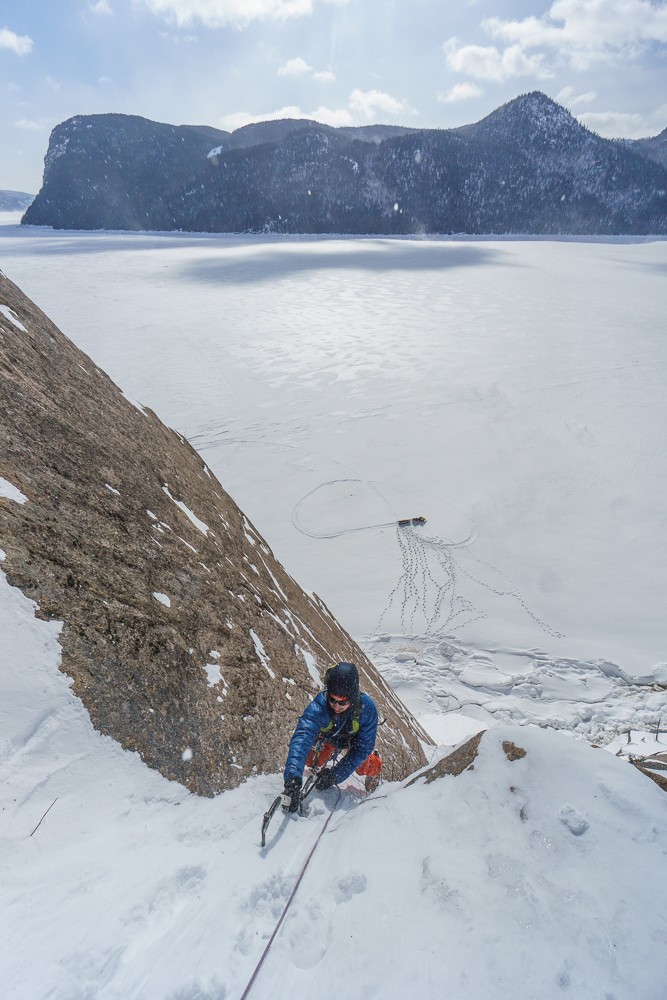Climbers Find Big New Ice and Mixed Routes in Remote Quebec
Five climbers recently spent over a week in a remote area of Quebec and climbed a number of new ice and mixed routes. Words by Maarten van Haeren

We (Jean-Philippe Belanger, Jas Fauteux, Charles Roberge, Pete Takeda and myself) spent nine days in the Nipissis area, exclusively climbing at Le mur de 51. Roberge and Belanger had previously visited the area (in 2013 and 2015), but only for a few days each.

Fauteux has climbed extensively around Quebec, but Pete and myself had done limited Quebec ice! In our camp at Nipissis we had access to a prospector tent and wood stove to fight off mornings down to -35C.
Though Nipissis is far away from any town or road, the access to the cliff is relatively straight forward, around 30 minutes from camp. Nipissis offered ice routes up to 200 metres in length, generally between WI4+ to WI5+ and up to 160 metres.

Throughout the week, conditions kept improving and between the crew of five, we climbed six new routes. Fauteux and I established La variation du Néerlandais WI4 100m+ and the mixed start to Chercheur d’or M7 A0 15m. Fauteux, myself and Takeda climbed the new Âme du Nord M6 WI5R 125m, which we added a bolt the first anchor on.
The entire team made the first ascent of Fourchette sternales droites WI 5 160m. With Fauteux and Roberge, we climbed climbed the new Ectoplasme (LH Pillar variation) WI5+ 110m, and I also teamed up with Belanger, Fauteux and Roberge for the first ascent of Petite pépite WI4+ 100m.

After we broke camp and returned to Sept-Îles, we continued our climbing trip towards the Saguenay Fjord. This is the location of Cap Trinité, one of the rare big walls in Eastern Canada.
Luckily, the rarely fully-formed Mince à Vie M4 WI4 turned out to be a cold, moderate day in a beautiful setting, sheltered by the Cap from the wind.

It was a treat to climb in Quebec alongside locals, enjoying good food, cold weather and remote ice climbing. I’m already looking forward to next year’s trip.


